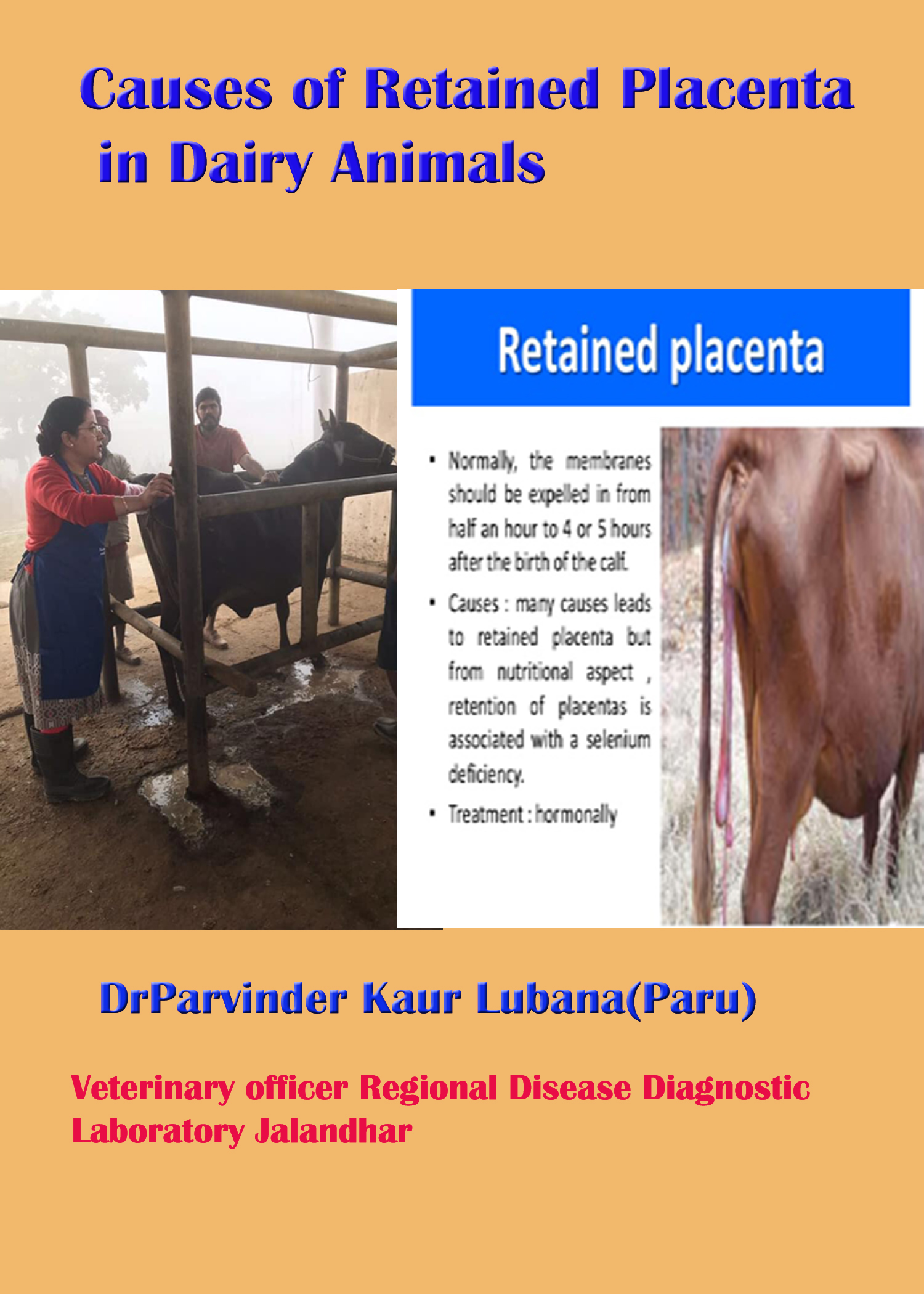Causes of Retained Placenta in Dairy Animals
DrParvinder Kaur Lubana(Paru)
Veterinary officer Regional Disease Diagnostic Laboratory Jalandhar
Retained placenta is most commonly associated with dystocia, milk fever (metabolic diseases) and twin births. In most herds with good management these causes make up the majority of known risk factors for retained placenta.
Symptoms
The single sign associated with RP is degenerating, discoloured, ultimately fetid membranes hanging from the vulva.
Occasionally, the retained membranes may remain within the uterus and not be readily apparent, in which case their presence may be signalled by a foul-smelling discharge.
Cows with retained fetal membranes are at increased risk of developing metritis, ketosis, mastitis, and even abortion in a subsequent pregnancy.
Treatment
Manual removal of the retained membranes is no longer recommended and is potentially harmful. Trimming of excess tissue that is objectionable to animal handlers and contributes to gross contamination of the genital tract is permissible. Untreated cows expel the membranes in 2-11 days, with 40 per cent of cases requiring no treatment.
Early use of antibiotics may also slow down the release of the membrane.
The best plan is to observe the cow closely for signs of illness and treat any symptoms that occur.
Regular weekly progesterone sampling can help determine if there has been any effect of the RP on the cow’s return to normal reproductive activity.
Prevention
There are no standard preventative regimes for RP. Good dry cow management is he best way of preventing RP and reducing its effects. This will include supply of correct nutrients, particularly magnesium, and fat soluble vitamins, maximising dry matter intake, maintaining the correct body condition score and supplying a clean dry environment.



